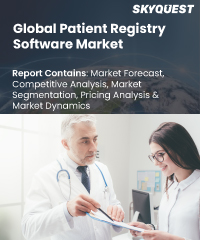
Report ID: SQMIG35G2254

Report ID:
SQMIG35G2254 |
Region:
Global |
Published Date: October, 2024
Pages:
219
|
Tables:
91 |
Figures:
76
Patient Registry Software Market size was valued at USD 1.87 Billion in 2023 and is poised to grow from USD 2.15 Billion in 2024 to USD 6.57 Billion by 2032, growing at a CAGR of 15.02% during the forecast period (2025-2032).
Rising incidence of chronic and rare diseases around the world and increasing adoption of value-based care models are projected to bolster the demand for patient registry software in the future. Growing demand for real-world evidence for medical research is also expected to promote the adoption of patient registry software over the coming years. Increasing efforts of governments to support the development of new patient registries to improve population health management are also expected to create new opportunities for patient registry software providers going forward. High adoption of advanced analytics and artificial intelligence technologies in healthcare are also forecasted to bolster patient registry software market growth in the long run. Moreover, the rising use of cloud platforms in healthcare is also expected to boost the use of cloud-based patient registry software through 2031. On the contrary, high costs of implementation, lack of standardization of healthcare IT systems, and data privacy and security concerns are estimated to be key constraints for patient registry software market outlook across the forecast period.
Our industry expert will work with you to provide you with customized data in a short amount of time.
REQUEST FREE CUSTOMIZATIONWant to customize this report? This report can be personalized according to your needs. Our analysts and industry experts will work directly with you to understand your requirements and provide you with customized data in a short amount of time. We offer $1000 worth of FREE customization at the time of purchase.

Report ID: SQMIG35G2254